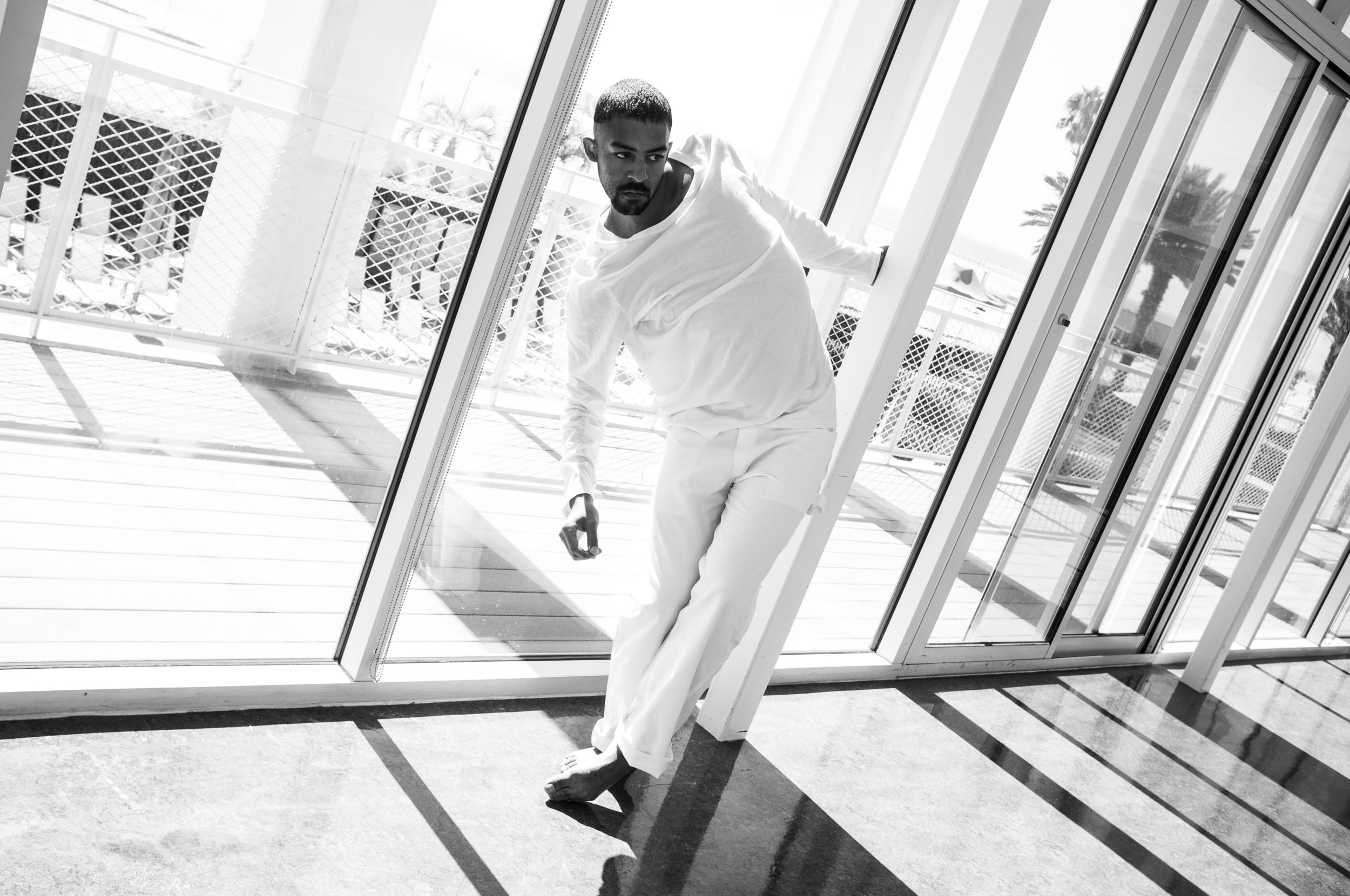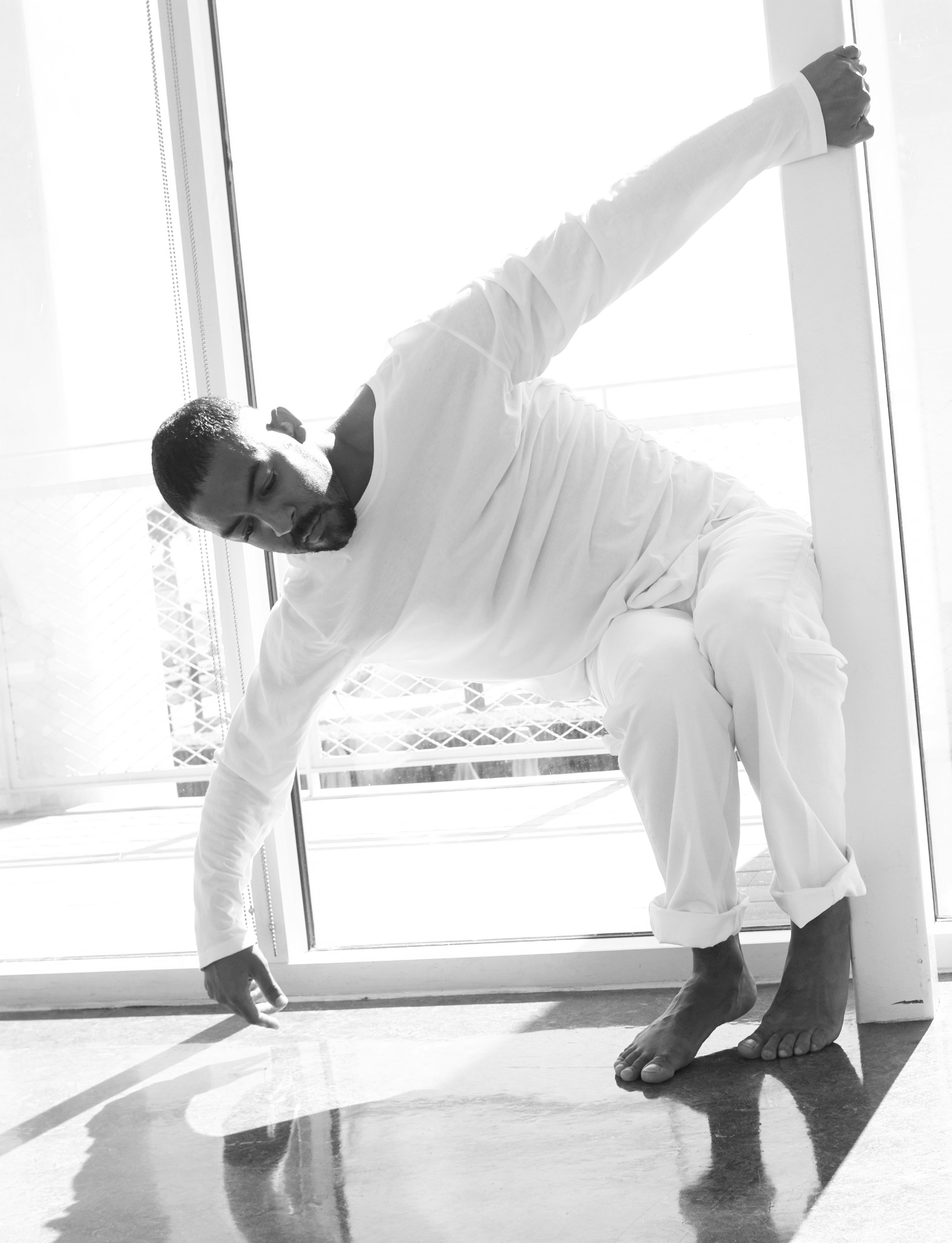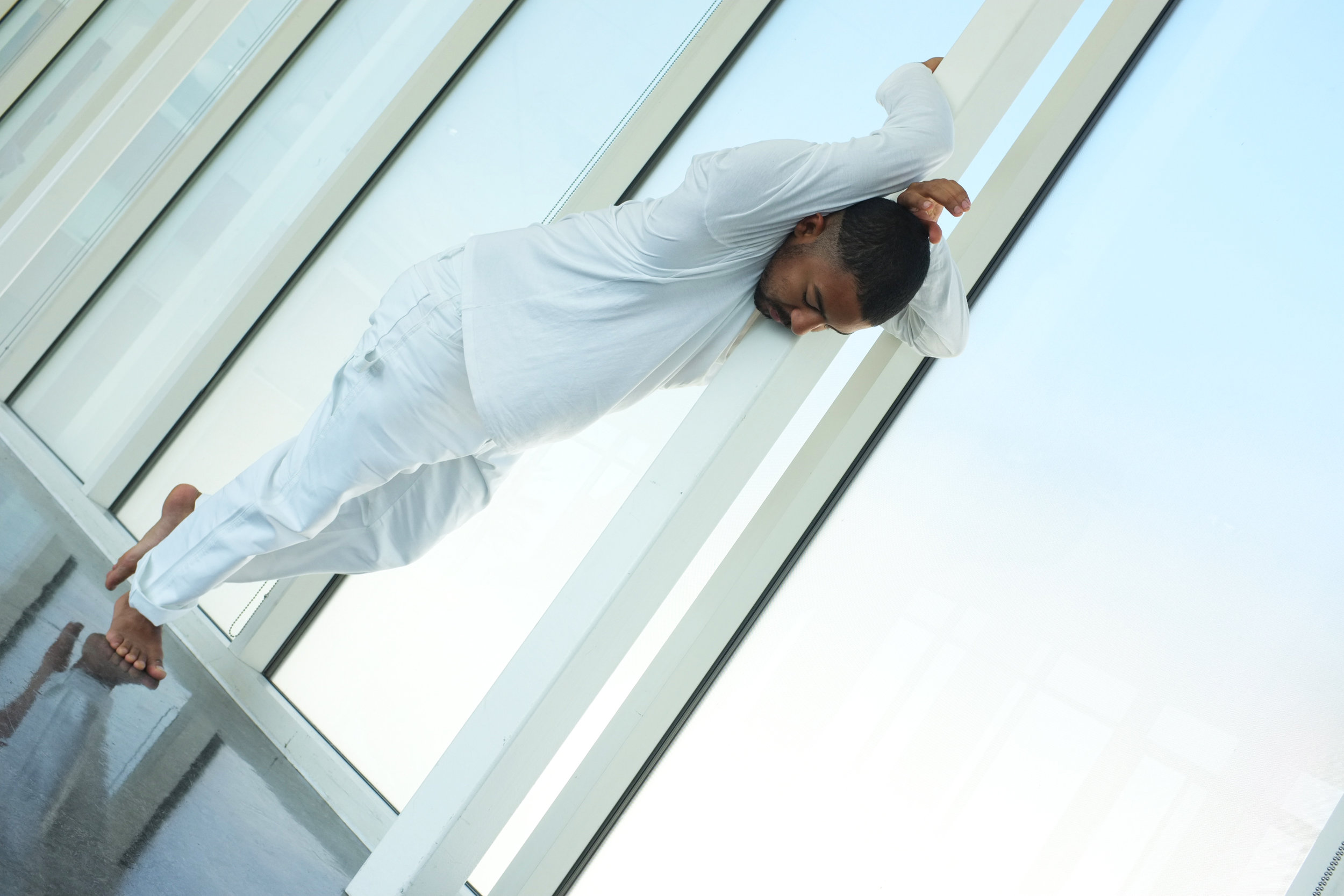text by Summer Bowie
How could anybody forget Toulouse-Lautrec’s paintings of Loie Fuller at the Folies Bergère, or Picasso’s myriad costumes and set designs for the Ballets Russes? Even if they've become less household over the years, those images made an indelible mark on mainstream society. Then there's the almost completely forgotten gems, like the stage set that Jasper Johns created for Merce Cunningham’s Walkaround Time, a pastiche of images from Duchamp’s “The Bride Stripped By Her Bachelor’s” in clear plastic pillows. The 20th century offered a spoil of fantastic collaborations between the visual and performing arts: Eadweard Muybridge’s iconic photos of Isadora Duncan, Léon Bakst’s costumes and set design for Nijinsky’s Afternoon of a Faun, or Isamu Noguchi’s set for Martha Graham’s Appalachian Spring – just to name a few. Unfortunately, I find myself hard-pressed to find any similar contemporary examples, which is why I was so pleasantly surprised to discover Chris Bordenave.
A classically trained, multi-disciplinary choreographer, who is one of the 3 founding members of a dance company called No)one. Art House., Bordenave has recently been working with a number of musical artists, such as Anderson Paak, Mayer Hawthorne, and more recently Solange and Kelela. He has also been creating site-specific works for institutions such as the California African American Museum, Hauser + Wirth, and Solange’s SAINT HERON House. I caught up with the young choreographer at the Annenberg Beach House, one beautiful autumn day, where he was rehearsing. We discussed his early training, the current state of dance affairs, and dance’s ceremonious relationship to visual art. Whether this current century will bear witness to dance and art finally renewing their vows is still a mystery, but if it is the case, Bordenave is one choreographer making a clear gesture that he's ready to meet in the middle.
SUMMER BOWIE: I want to start by asking you about your performance this past weekend at the Hollywood Bowl with Solange, how did it go?
CHRIS BORDENAVE: It was good. She brought me on to help with coordinating the additional performers that she had. She had twelve or fourteen extra horn players and she had a full string arrangement. I was just helping out with getting their choreography and their entrances and exits together. Just kind of helping out with whatever else she needed.
BOWIE: Is that your first time choreographing musicians in their movements, or is that something you’ve been doing?
BORDENAVE: I’ve been doing it. I’ve worked with Mayer Hawthorne, Anderson Paak, Empress Of, and a few other artists, just choreographing them in music videos. It was my first time doing a live performance — actually no that’s not true, I did Anderson Paak on the Ellen Show.
BOWIE: What are you rehearsing for right now?
BORDENAVE: Right now we are doing a performance at the Bootleg Theater. It’s going to be me with a vocalist and she made some songs out of these old black poems about the Great Migration. So this performance is one man’s journey through these songs, dance, theater, and projection mapping. It’s about their experiences moving from the South to the North during that time, what they went through, and how layered the experience is.
BOWIE: Since founding No)One. Art House, you’ve been performing and collaborating with a wide range of musical artists and art institutions. Is that bridge between musically driven work and performance-art driven dance what you were originally aiming for with No)One.?
BORDENAVE: Yeah, we knew that we wanted to educate and also challenge audiences in LA, because LA is a bit new to concert dance. We figured bringing it physically closer to the audience would impact them a bit more. Doing it inside of a proscenium stage doesn’t really connect, especially with contemporary dance. So, we found that when we do it in galleries, or unconventional spaces where we can physically get closer to the audience. They feel more connected to the work.
BOWIE: On the music side, you’ve been working with everyone from Solange, to Kelela, to Mayer Hawthorne, to Anderson Paak. How do you approach those kinds of commissions from a choreographic perspective?
BORDENAVE: First it goes off of their original vision. Right now I’m working with Kelela, and it’s nice to be working with her at this point because it’s really the first time she’s headlining shows, and it’s going to be her first album. It’s kind of a new arrangement for her, it’s very fresh and very new. So, it’s nice because I’m able to bring my concert dance art sensibility to this kind of commercial, mainstream element.
BOWIE: On the art side, you’re going to be presenting work at Hauser & Wirth in LA, the California African American Museum, and the SAINT HERON house. Does your approach change dramatically in accordance with the different types of venues that commission you?
BORDENAVE: Totally, it’s all about the space. It doesn’t really benefit anyone if we keep doing the same thing in different spaces. We want people to feel connected. We want them to feel like they are the work, that their role is as vital as that of the performers.
BOWIE: So, let’s go back to the beginning, you started dancing when you were about nine. What was your training like at that age?
BORDENAVE: I started at the Lula Washington Dance Theatre here in LA, and we did a lot of modern, African, jazz, and hip hop. Kind of everything, she wanted us to have a lot of tools under our belts so that we could work and do whatever we were asked to do. Then I went to the Debbie Allen Dance Academy once she opened up her school. When I graduated from high school, I moved to New York and went to the Ailey school, then I graduated from the LINES Ballet BFA program in San Francisco.
BOWIE: So you went to Ailey then came over to Alonzo King and finished your education?
BORDENAVE: Right. I was part of the inaugural class for their joint program with Dominican University. That was mainly contemporary ballet and I danced with the LINES company for a little bit after I graduated. Afterwards, I danced with Morphosis in New York, and then Luna Negra in Chicago. I moved back here because the state of affairs with dance companies in this country is failing. A lot of the most prominent contemporary dance companies have closed because people don’t care anymore about dance and they don’t want to give money to it. I basically started this new company with some friends as a way of rebuilding the model, because the old model clearly isn’t working. We thought that LA would be ideal, not only because it’s our home, but because it doesn’t really exist here. There’s definitely a void, but concert dance in LA is quickly becoming more popular.
BOWIE: It seems like your dance practice itself has been moving stylistically as well as geographically. From the examples you just gave, you’ve gone from ballet, to latin-based contemporary, to contemporary, to gaga-based movement…and I’m sure you’ve done a whole wealth of work in between. Would you say there’s a single motivating factor behind your overall trajectory?
BORDENAVE: The direction. It was always really important for me to work for someone who I knew could change a dancer. Every time I would go and see LINES, I had no idea how the dancers were doing it. I wanted to learn from whoever was directing. Gustavo Ramirez Sansano (who took over Luna Negra before it closed), he really trained me how to dance and how to work with different choreographers; to not only be true to what they’re doing, but also to be true to myself.
BOWIE: When we look at dance history, at least from a Western perspective, dance and fine art really developed in tandem, especially over the 20th century from the avant-garde movement, to modern, and finally the postmodern movement. Then we get to contemporary, and it seems like contemporary art has gone in a very conceptual direction and contemporary dance has been very commercially driven. Do you have any theories as to why that phenomenon may be occurring?
BORDENAVE: I think contemporary jazz dance has gone commercial for sure. But true contemporary dance, I wouldn’t say that it’s gone commercial quite yet. I think people just get confused about the differences between the genres. A lot of people think what they’re doing on So You Think You Can Dance? is contemporary dance, and it’s not. It’s contemporary jazz dance, which is very different. A big aim for me, and the reason why I always try to perform in these fine art institutions, is because that’s the only way that people will understand it’s at the same level as fine art, as visual art. In this country, unless you’re doing ballet or commercial dance, there’s no funding. The level of what you’re seeing on stage is usually very basic because the funding isn’t there. But when you go to Europe or when contemporary companies tour here, you see the scale is so large, and so much more than what we’re doing here. It’s sad that we have to bring outside companies from around the world to show us what the next level of dance is.
BOWIE: Do you think that academically, our institutions are doing justice by American dancers?
BORDENAVE: No! I’ve found that the institutions that have dance programs usually keep the same faculty for decades. Decades upon decades upon decades. People who have not worked, people who have not been in the field for years. So, of course, if you have this outdated information that you keep perpetuating to your students, they’re not going to know what’s going on. I would say there are about four conservatory programs in this country that can compete with companies outside the U.S.
BOWIE: Which would you say those four are?
BORDENAVE: I would say they are USC, Juilliard, San Francisco Conservatory, and SUNY Purchase… and LINES. So, five.
BOWIE: Do you have any predictions for what the future of dance will look like, both academically and commercially?
BORDENAVE: I think people are starting to wake up to contemporary dance for sure. It’s becoming more prevalent with people like Ryan Heffington. They’re bringing it into fashion and music videos and to film. There’s definitely a slow progression, it’ just... slow.
BOWIE: What do you think is the most valuable lesson you’ve learned as a performer?
BORDENAVE: That it’s important to see dance, to see all forms of art, to let it inform you, to be influenced, and also to copy. I feel like I’ve only been able to be so versatile because I’ve been able to really observe and listen and then copy and then let it influence my work. People are always scared like, “Oh no, I can’t be like them.” But Michael Jackson stole the moonwalk. All these influential people steal. Beyoncé steals... she does. It is a form of flattery. I don’t see why people get so upset when Beyoncé steals their work. Their work would never have been seen by that many people unless someone like her was to do it. Of course, there’s artistic integrity and all of that, but I still think that there’s nothing wrong with it. It’s okay.
BOWIE: Finally, I feel like we see a lot of young people who’ve fallen in love with dancing but then they don’t know how to continue the practice as adults. Do you have any advice for young adults who struggle with feeding that passion?
BORDENAVE: That’s a great question. As soon as I moved back here, people came up to me like, “Oh are you still dancing?” You know, of course. It’s what I am. It just goes back to arts education. I know USC is definitely teaching them the business side of it, because that’s a reality. Especially now with social media, you have to be able to market yourself. You have to be able to know what you look like, what to post, you have to know the avenues you can go down. You can be an arts manager, you can be a publicist, you can be a gallerist, you can do so many things within the art world even if you’re not the one performing or creating the work. I taught myself how to curate, how to reach out to magazines, how to do all of these things just by seeing what other people are doing and trying. I think it’s important to know that you can’t just dance anymore. You have to be able to promote yourself, promote your work, promote every aspect of what you’re doing. Even if you’re not that good.
No)one. Art House will be performing at 8pm November 9 at Hauser & Wirth Los Angeles, as well as 7-9pm December 19 at the California African American Museum. Follow Chris Bordenave on Instagram @chrisemile, follow No)one. Arthouse @no_one.arthouse, follow AUTRE @autremagazine. Look out for this interview, as well as interviews with Yayoi Kusama, Agnes Varda, Harmony Korine, Judith Bernstein and many more in the Winter 2017 issue of AUTRE. Available for pre-order now! This is a limited-edition issue, get your copy while supplies last!











